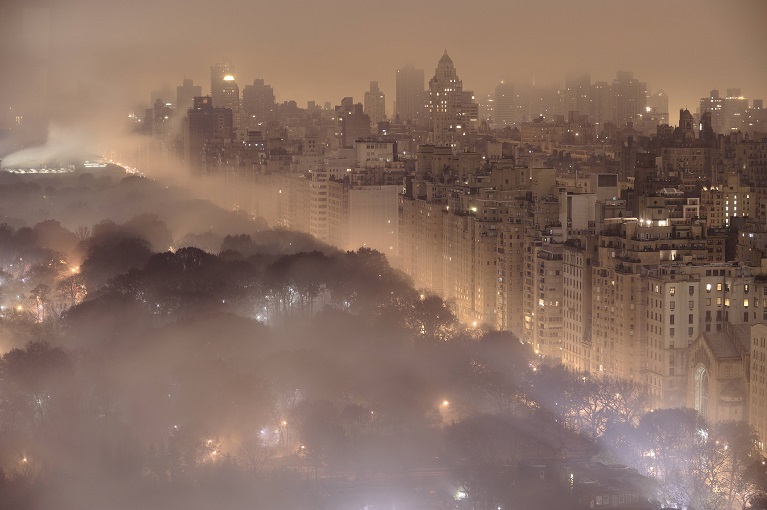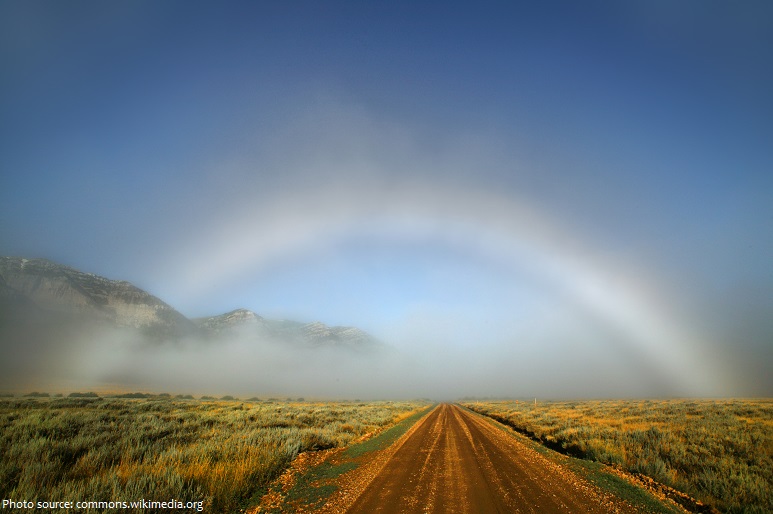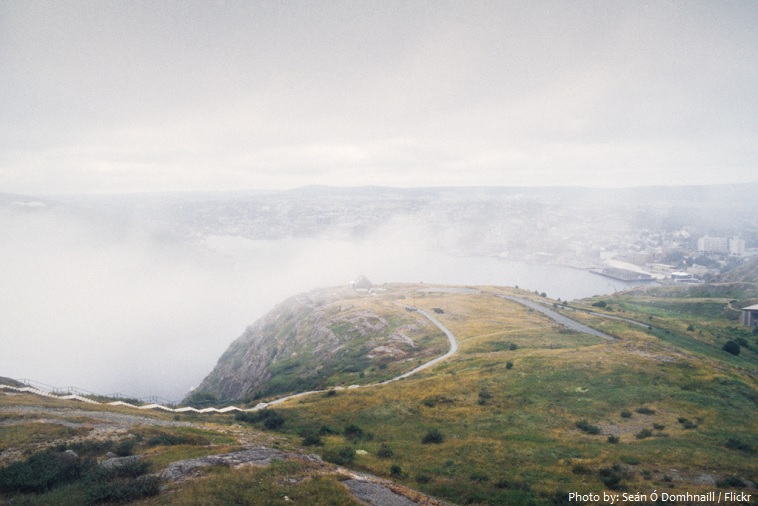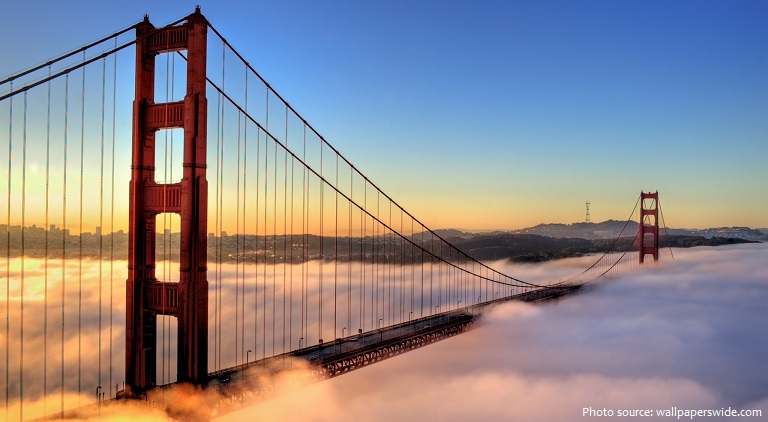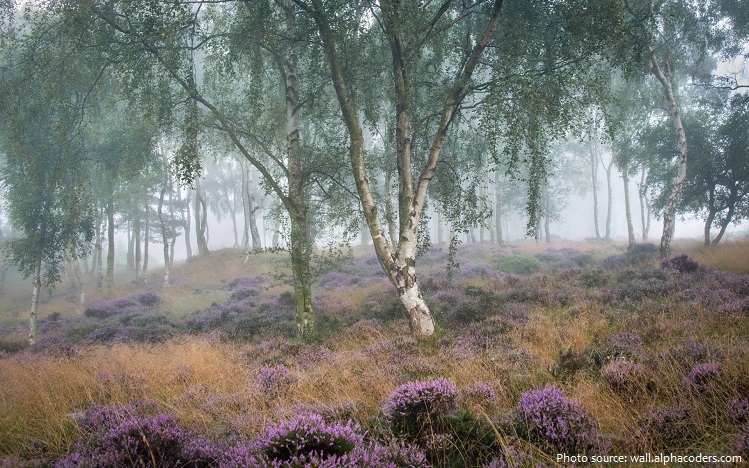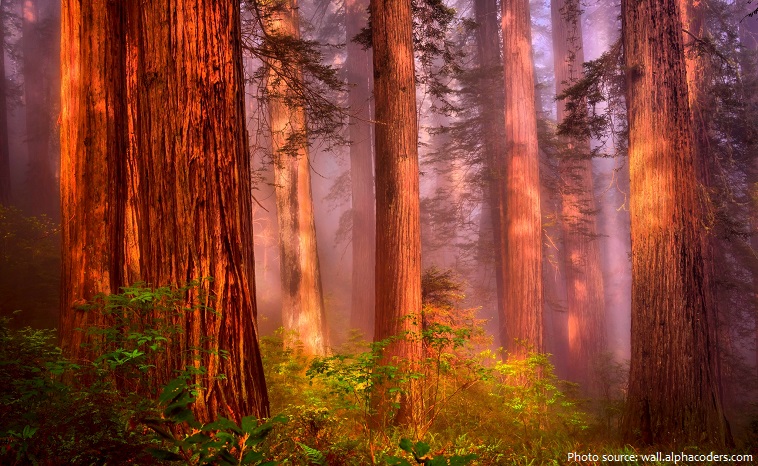Fog is a cloud that is near ground level or touches the ground and sufficiently dense to reduce horizontal visibility to less than 1,000 meters (3,280 feet).
Fog can be thin or thick, meaning people have difficulty seeing through it.
It forms when the difference between air temperature and dew point is less than 2.5 °C (4.5 °F).
Fog is made up of tiny water droplets or, in very cold conditions, ice crystals. When seen on a high speed camera, (a special camera that takes many frames and can view videos at very low speed) it looks like hundreds of small water droplets moving through the air.
The thickness of fog varies depending on the atmosphere, temperature, weather and location.
Fog is most likely to occur at night or near dawn when the temperature of the day is normally at it’s lowest.
There are many types of fog, such as evaporation fog, advection fog, radiation fog, ice fog, hail fog, ground fog and upslope fog.
Depending on the humidity and temperature, fog can form very suddenly and then disappear just as quickly. This is called flash fog.
Sea fog, which shows up near bodies of salty water, is heavily influenced by the presence of sea spray and microscopic airborne salt crystals.
Fogbow a phenomenon similar to a rainbow, produced by sunlight shining on fog.
Shadows are cast through fog in three dimensions. The fog is dense enough to be illuminated by light that passes through gaps in a structure or tree, but thin enough to let a large quantity of that light pass through to illuminate points further on. As a result, object shadows appear as “beams” oriented in a direction parallel to the light source. These voluminous shadows are created the same way as crepuscular rays, which are the shadows of clouds. In fog, it is solid objects that cast shadows.
According to the Guinness Book of World Records, the foggiest place in the world, the island of Newfoundland, Canada, where the chilly Labrador current from the north meets up with the much warmer Gulf Stream from the south, creating 206 foggy days per year. When the fog burns off it starts with the inland areas, slowly making its way to the coast, so it takes longer to dissipate.
The foggiest city in the world is New Orleans with 200 foggy days per year.
While San Francisco may not be at the top of the list in terms of number of foggy days, fog is famous in San Francisco. In fact, even though the City By The Bay only sees 135 foggy days, no place on Earth is more associated with fog. Who doesn’t conjure up the image of the Golden Gate Bridge, peeking out from the clouds at the very mention of the city?
The foggiest area in the United States is Point Reyes, California with around 220 foggy days per year.
The word “fog” also may refer to clouds of smoke particles, ice particles, or mixtures of these components.
Under similar conditions, but with visibility greater than 1,000 meters (3,280 feet), the phenomenon is termed a mist or haze, depending on whether the obscurity is caused by water drops or solid particles.
Many ancient cultures collected water from fog by placing large pots under trees and shrubs. As the water from fog collected on these objects, the pots collected the water. This method of water collection was effective, but not as effective as collecting rainwater or other liquid water.
Today, engineers are working on more sophisticated ways to collect water from fog. The most effective way has been the development of “fog catchers.” Fog catchers are very large screens constructed in arid areas. As fog glides in, water droplets form around the thin screens and drip to the collection pools below. In one day, a single screen can collect more than a hundred gallons of water.
Redwood forests in California receive approximately 30–40% of their moisture from coastal fog by way of fog drip.
The presence of fog has often played a key role in historical events, such as strategic battles. One example is the Battle of Long Island (August 27, 1776), when American general George Washington and his command were able to evade imminent capture by the British Army, using fog to conceal their escape. Another example is D-Day (June 6, 1944) during World War II, when the Allies landed on the beaches of Normandy, France during fog conditions. Both positive and negative results were reported from both sides during that battle, due to impaired visibility.


